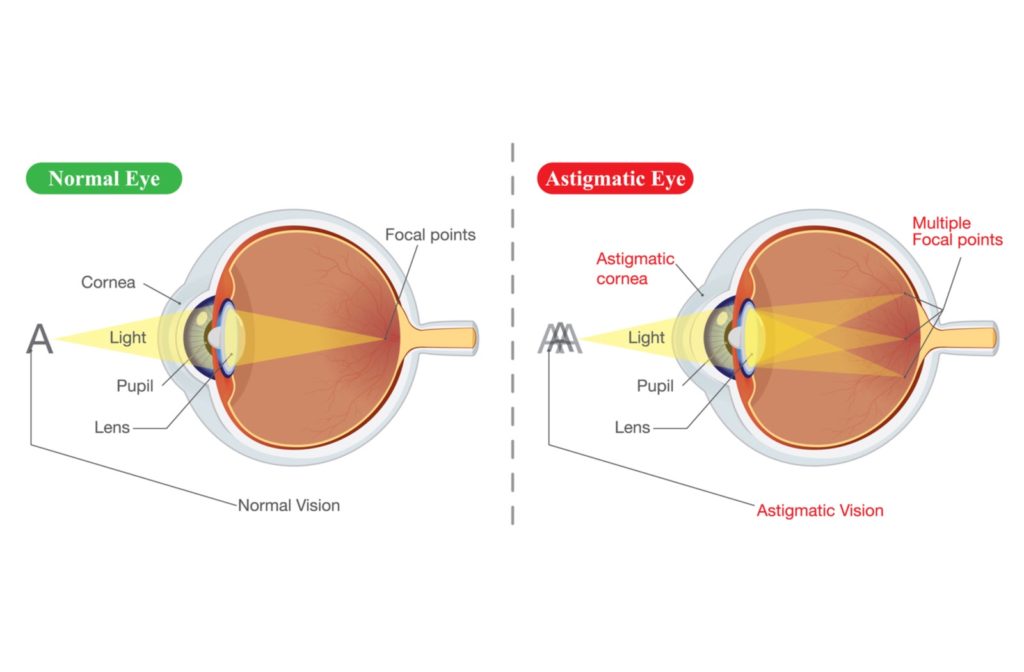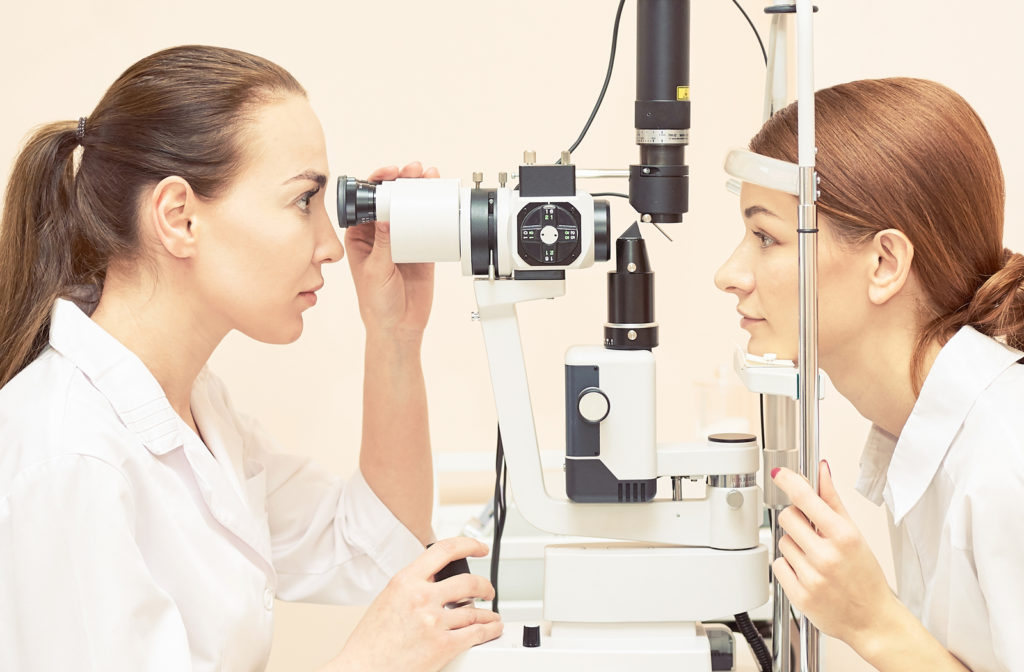During an eye exam, your optometrist tests for many different conditions. Nearsightedness and farsightedness are well known, but what is astigmatism? This common condition can present alongside other refractive errors, and many people have it from birth.
While it’s a common problem, some people aren’t aware of how this condition can affect your vision. Continue reading to learn more about astigmatism, including what it is, what causes it, who is at risk, and some potential treatment options available.
What Is Astigmatism?
Astigmatism is a common eye condition caused by an imperfection in the curvature of your eye’s cornea or lens. Approximately 1 in 3 Americans has astigmatism. This condition typically presents alongside other refractive errors, such as hyperopia and myopia.
The eyeball is usually shaped like a round ball, allowing light to come inside and bend evenly. Someone with astigmatism has an abnormally shaped eyeball, similar to a football. This error causes light to bend in one direction more than another, causing objects to look blurry.
There are two types of astigmatism, corneal and lenticular. Corneal astigmatism affects the curvature of your cornea, and lenticular astigmatism affects the curvature of your eye’s lens.
Someone with undiagnosed astigmatism may experience several symptoms.
Astigmatism Symptoms
Common signs of astigmatism include:
- Blurry or distorted vision
- Headaches
- Eyestrain
- Difficulty seeing at night
- Squinting
If you notice any of these symptoms, schedule a comprehensive eye exam. Your optometrist can diagnose any potential problems you may have. Astigmatism can present in young children, so keep an eye out for any concerning symptoms your child may be experiencing.
Astigmatism in Children
Undiagnosed vision problems can lead to poor school performance. Many children don’t notice visual issues, so watch for common signs of a refractive error. Children may experience headaches, eyestrain, or squint frequently.
What Causes Astigmatism
Astigmatism occurs when your cornea or lens has an irregular curve, causing light rays to focus improperly.
Most people are born with astigmatism, but an eye injury, disease, or surgery can potentially cause this condition. Doctors are unsure why astigmatism develops. This condition is considered hereditary.
There is a common myth that astigmatism can develop from reading in low-light or sitting too close to the television, but this isn’t true.
Who is At-Risk of Astigmatism?
Anyone can develop astigmatism, but some people may be at more risk than others. You may have a higher chance of developing astigmatism if you have any of the following:
- A family history of astigmatism & other eye conditions
- Severe nearsightedness (myopia)
- Severe farsightedness (hyperopia)
- Scarring or thinning of your cornea
- A history of eye surgery
If you’re diagnosed with astigmatism, what types of treatments are available?

Astigmatism Treatments
Astigmatism and other refractive errors are common and treatable. The treatment options for this condition are corrective lenses like eyeglasses and contacts or refractive surgery.
Contact Lenses
Contacts are a great alternative to eyeglasses. Depending on your needs, there are different types of contact lenses you can use. For astigmatic eyes, toric and gas-permeable lenses are popular options.
Toric Lenses
Toric lenses are unique because they offer different corrective powers in multiple areas of the lens. Astigmatism affects each eye differently, so your toric lenses are completely catered for your needs.
These lenses have corrective powers for the horizontal and vertical axis of your eye. The lens perfectly aligns with your unique eye shape to give you clear vision.
Another unique aspect of toric lenses is their weighted bottom. Most lenses shift when you blink, but toric lenses prevent the corrective powers from shifting out of position by automatically adjusting themselves. The weighted bottom moves the lens back into its original position when it shifts during blinking.
Gas-Permeable Lenses
Gas-permeable lenses provide clear and crisp vision. They’re more durable and breathable than the average soft contact lens. With a thicker design, gas-permeable lenses are easier to handle.
Because the lens is more rigid than other contacts, gas-permeable lenses may be more uncomfortable to wear. Some people require a few weeks before they feel used to these lenses.
Eyeglasses
Eyeglasses are a common treatment method for astigmatism. Once you receive your prescription following a comprehensive eye examination, your optometry team can help you choose the best pair of glasses for your needs.
Refractive Surgery
Surgery is an option for anyone who doesn’t want to rely on contacts or glasses. Laser surgery changes the shape of your cornea.
LASIK and PRK are common types of refractive surgery, but you need otherwise healthy eyes without any retina problems or corneal scarring to qualify for surgery.
Protect Your Eye Health
Regardless of the treatment option you choose, you have to care for your ocular health. Regular eye exams are important for protecting your eyes. An annual exam can help your optometrist determine any changes in your ocular health or vision.
If you’re experiencing any symptoms of astigmatism, or need an eye exam, book an appointment today.



